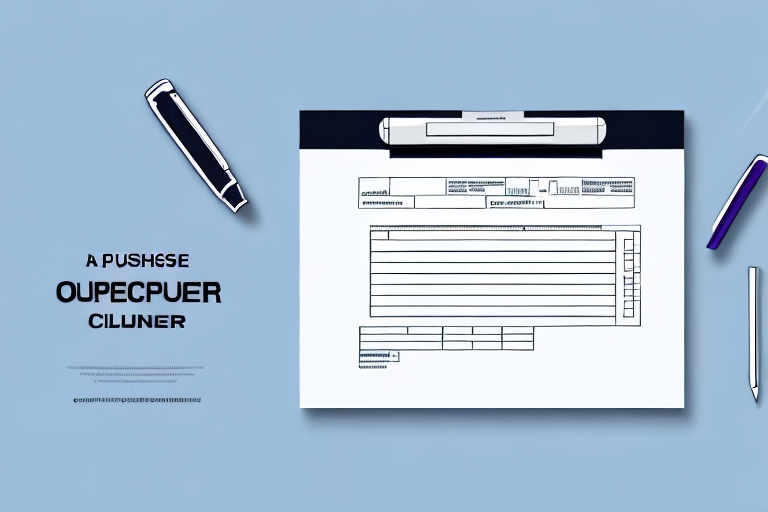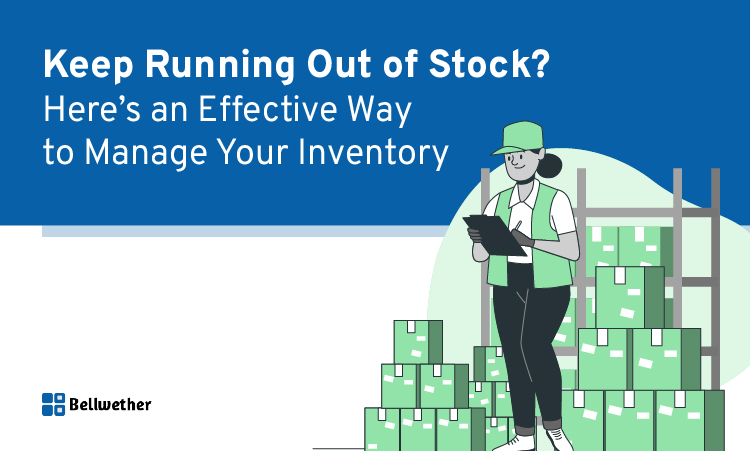An effective and efficient purchasing function is critical for your business. It will help you keep costs down and ensure productivity. To develop a streamlined purchasing process, your first step should be inventory management.
The best method to manage inventory is to invest in e-procurement software that provides analytics so that you can track your inventory and oversee purchases. At Bellwether, we believe that automation is king.
We’ve worked with thousands of business to streamline and control purchasing and inventory management. Our software automates the process to result in a 5-10% annual saving. Join the thousands of businesses, including the Massachusetts Department of Health, Aramark, and Pacific Life who have streamlined their inventory management with Bellwether.
What is purchasing and inventory management?
Most of the opportunities to improve efficiencies start with shortening the time it takes from order to receipt. However, you want to do this without incurring an additional cost. In order to accomplish this, you must focus on inventory.
Inventory management typically includes:
- Controlling and overseeing purchases
- Maintaining the storage of inventory
- Controlling the amount of product for sale
- Fulfillment
Your business’ particular meaning of inventory management will vary based on the types of products you sell and how you sell them.
Inventory ties into procurement in a big way. Basically, SMBs track inventory and make decisions about ordering. Knowing when to reorder, how much to order, and where to stock products can be complicated, especially when using manual processes.
That’s when businesses usually decide to make the switch to more robust procurement software that can help in all aspects of inventory management. It even extends beyond the basic ordering and stock monitoring to encompass everything from end to end production and business management to lead time and accounting.
Why is inventory important, and why should it be managed efficiently?
Your business depends on two things: inventory and your customers. However, in order to have customers, you need inventory. Think of it as a cycle, you must first have a product and then sell it to a customer in order to get more of that product. However, as your business grows, managing your inventory can become challenging.
Your inventory needs to be managed efficiently to keep your business successful. You wouldn’t want a customer to place an order and then find out that you don’t have it in stock. This is just one problem that can happen from manual procurement processes. A person may forget to input the correct information or may input the wrong information altogether, which can lead to unfulfillment and lost money.
Here’s why your inventory needs to be managed efficiently.
Customer Relationships
Your customers should always be your number one priority. When you have better control of your inventory, you can provide better customer service. Those customers will then come back, and you will create a mutually beneficial relationship with them.
Using our previous example, let’s say that a customer orders something from you and you are out of stock. That order went to the warehouse only for you to discover that it is out of stock. If this happens, you must then go back to your customer, even though they ordered the product hours or even days ago, and tell them that you are out of stock. That customer will then go somewhere else to buy the product, and they will probably never come back because you gave them a bad experience.
An innocent little mistake like this could cost you. Word of mouth is one of the most tried and true marketing techniques, but it can also be your demise. A customer with a bad experience will tell their friends, and you will lose more than just one customer.
With inventory and purchasing software, you will know exactly how much of each item you have in stock, making sure the process runs smoothly for both your employees and your customers.
Warehouse Space
On the other side of this equation, if you have too much inventory, you are actually costing yourself money. You never want to have too much because there is always a chance that you will not sell every single product. There will be absolutely no way of getting your money back if that happens. You want to always have just enough to serve your customers without using up too much space in a warehouse. Too much inventory can trigger profit losses, especially if your products can expire or damage easily.
Understanding your customer demand is the only way to prevent this from happening. Your e-procurement software will analyze data across your purchase process. It will then show you this data in an easy to read format, which will help you understand your customer demand. The data will also provide insight into rogue spending as a result of not knowing the demand.
Purchasing and inventory management software will prevent this from happening. As your business grows, it will become difficult to keep track of every product in your warehouse. It’s possible that the person in charge of ordering will forget they had already ordered certain products and make the mistake of ordering more. When you can more easily track your inventory and know just how much you have, you will reduce any unnecessary spending.
Business Workflows
The best way to save money is to improve workflows. However, if you have an inventory management issue, you are costing yourself money. Each time an issue happens, someone will have to go back and correct the issue, making them go backward instead of forward. Manual processes, like the use of spreadsheets, can cause this easily because they are prone to human error.
However, automating the process using purchasing and inventory software will reduce the potential for risks from errors that cost you time and money. For example, if an employee accidentally marks the wrong shipment as fulfilled, you could be risking two customer relationships because one is getting the wrong order and another is not receiving one at all. Effective workflows, however, will work with inventory for a smoother process that makes procurement much easier.
The Importance of MRO Inventory Management and Procurement
Maintenance, repair, and operating supply (MRO) items are supplies that are utilized in the production process but are not seen in the end products. These items may include:
- Gloves
- Safety Equipment
- Computers
- Cleaning and Lab Supplies
- Industrial Equipment
- Upkeep Supplies, such as lubricants, gaskets, repair tools
The basic role of MRO items is to keep the supply chain running smoothly. Failure to maintain, repair, and overhaul systems can be detrimental. However, organizations who maintain MRO inventory can better supply products to customers.
Typically, MRO purchases are not managed by the purchasing department but by administrative personnel. Unfortunately, these individuals may not have a complete picture of the MRO inventory at hand. Supply chain professionals should remedy this by tracking the following:
- Lists of required MRO items generally used
- Lead times needed to resupply items
- MRO item usage and depletion rates
Improving Inventory Management for Effective Purchasing Function
Controlling the cost for MRO items requires careful management and planning. Parts need to be available in the inventory when they are needed and they need to be stored properly to be effective. If you are not effectively managing your MRO items, you should expect additional costs.
Request for the part should not be an emergency and the purchase should not have to be expedited. In this situation, you are actually losing money. Here’s how you can avoid this.
Keep the Right Parks In-stock
Security is a requirement for inventory management. Access to the storeroom should be limited so that employees understand the importance of documenting any parts they removed from the inventory. Errors may occur during inventory stocking and item picking that also lead to misplaced MRO items.
Keep Up-to-date EBOMs
A formal Management of Change(MoC) process should help manage equipment modifications. The MoC should include modifications, changes to the process, and operational training. All of these aspects should be fully documented.
The Equipment Bill of Material (EBOM) should be revised to include the new parts for the equipment. The old parts should then be removed from the EBOM and reviewed. These new parts should be added to the MRO inventory.
Storing MRO Parts
In order to keep track of your MRO items, you need to store them properly. Improper storage can cause parts to fail or not perform as expected. Large motors, for example, need a documented and scheduled preventative maintenance (PM) program while they are being stored. They also need to be stored very specifically, with documented information on maintenance.
All three of these practices can reduce any additional costs from production time, lost utilization of the maintenance crafts, and excessive procurement costs involved in expediting need parts.
Don’t let your business lose valuable customers because you didn’t change the way you manage inventory. The success of your business depends on not only the products you sell but how you control them from the moment they arrive at the warehouse to the moment they leave. Bellwether provides the best value in purchasing/inventory software or your money back!







